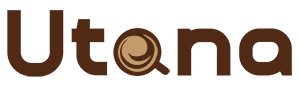Coffee grading is a standardized process used to evaluate the quality of coffee beans. The process involves evaluating the physical and sensory attributes of the beans, including their size, shape, color, aroma, flavor, and acidity. the coffee grading process involves classifying coffee beans based on their size, shape, density, and also takes into account defects.
One of the most widely used grading systems for coffee is the AA system, which originated in Kenya and is now used in several other countries.
THE KENYAN AA COFFEE GRADING SYSTEM
The Kenyan coffee grading system is based on the size, shape, and density of coffee beans. It is a rigorous grading system that classifies coffee beans into ten different grades, with the highest quality beans receiving the AA grade. AA coffee beans have to be at least 6.2mm in diameter and a screen is used to separate the beans. These beans usually have a more uniform shape, which makes them easier to roast. The various coffee grades in the Kenyan coffee grading system, listed from highest to lowest quality are:
- AA: This is the highest quality grade, and it represents coffee beans that are the largest, heaviest, and most perfectly shaped. They are usually very dense and have a bright acidity and a distinctive floral aroma.
- AB: This grade represents coffee beans that are slightly smaller than the AA grade, but still of excellent quality. They are slightly less dense and may have a slightly lower acidity than AA grade beans.
- PB: Peaberry beans are smaller, rounder, and denser than regular coffee beans. They occur when only one seed develops inside the coffee cherry, rather than two. PB beans are considered to be of excellent quality, with a bright acidity and a sweet flavor.
- C: This grade represents coffee beans that are slightly smaller than PB beans, but still of good quality. They may have a slightly lower acidity and a milder flavor profile.
- E: This grade represents coffee beans that are smaller than the C grade, but still considered to be of good quality. They may have a lower acidity and a less complex flavor profile.
- TT: This grade represents broken, damaged, or defective coffee beans that are too small to be graded as E grade or higher. They are usually sold as lower-quality coffee.
- T: This grade represents coffee beans that are too small to be graded as TT grade or higher. They are usually sold as lower-quality coffee.
- MH/ML: These grades represent coffee beans that have defects, such as insect damage, black beans, or over-fermentation. They are considered to be of low quality and are usually sold as commercial coffee.
- MH2/ML2: These grades represent coffee beans with severe defects that make them unsuitable for consumption. They are usually sold as industrial-grade coffee or used for other purposes.Off grades
- Off grades: These are coffee beans that do not meet the standards of any of the other grades, often due to serious defects or damage. These beans are usually sold at a much lower price than other grades and are used for lower-quality coffee blends or industrial purposes.
The grading system can vary by country, and not all countries use the AA system. For example, in Colombia, the grading system is based on a similar approach, but the grades are represented by numbers rather than letters. In contrast, in Brazil, the grading system is based on a combination of size and defects.
Once the beans have been sorted by size, they are evaluated for their aroma, flavor, and acidity. This is typically done through a process called cupping, where a small amount of coffee is brewed and tasted by a trained professional.
Another commonly used grading system is the Specialty Coffee Association of America (SCAA) grading system. This system uses a scale of 0-100 to rate coffee beans based on their sensory attributes.
The different grades of coffee, according to the SCAA grading system are:
- Specialty Grade (90-100): This is the highest grade of coffee and is reserved for beans that have exceptional flavor and aroma. Specialty grade coffee must be free from defects and have no more than 5% of the beans in a sample showing slight defects.
- Premium Grade (80-89.99): Premium grade coffee is high-quality coffee that is free from major defects but may have some minor defects. This grade is often used for coffee that is sold in supermarkets or coffee shops.
- Exchange Grade (75-79.99): Exchange grade coffee is typically used in blends and is sold to wholesalers and roasters. It may have some major and minor defects, but is still considered to be of acceptable quality.
- Below Standard Grade (0-74.99): This grade of coffee is not typically sold for consumption and is usually used for industrial purposes, such as in the production of instant coffee.
Other Grading Systems
In addition to the SCAA grading system, there are several other grading systems used to evaluate coffee beans, including:
- Brazilian/New York grading system: This system is based on a scale of 1-8, with higher numbers indicating higher quality.
- European Preparation (EP) system: This system is used to evaluate coffee beans that have been wet-processed, or washed. Beans are graded on a scale of 1-5, with higher numbers indicating higher quality.
- Japanese Grading System: This system is based on a scale of 1-5, with higher numbers indicating higher quality. The system takes into account the size, shape, color, and aroma of the beans.






